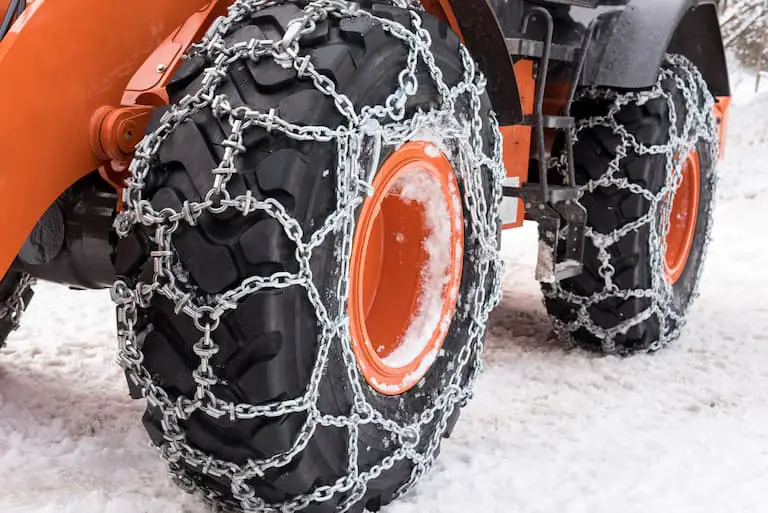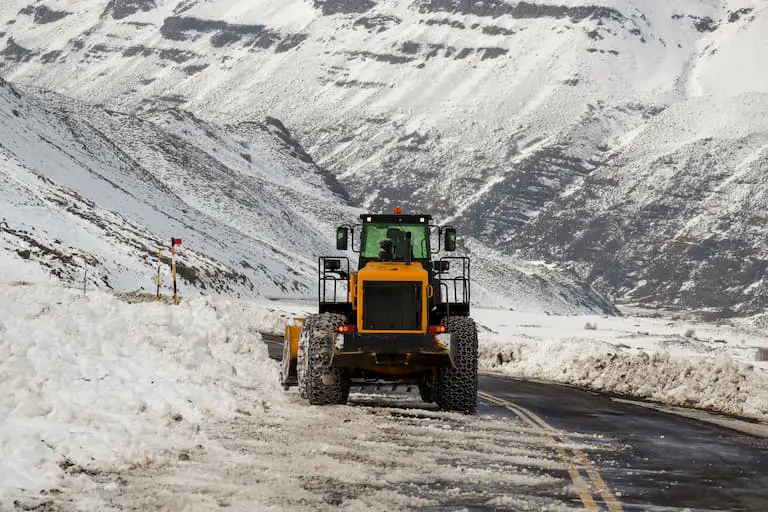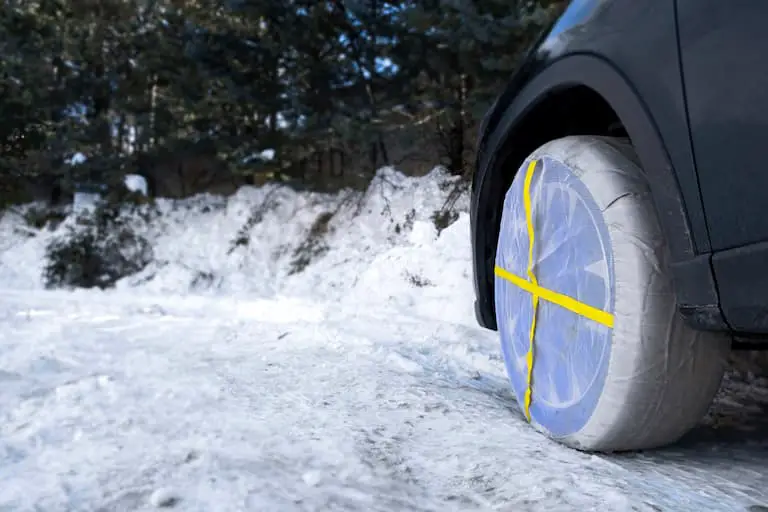As an Amazon Associate, we earn from qualifying purchases. We may also earn commissions if you purchase products from other retailers after clicking on a link from our site.
During winter, motorists encounter driving challenges, including vehicles slipping or sliding on snowy roads. However, most truck drivers use snow chains to provide more tire traction. But, how fast can you drive a semi-truck with these tire chains?
You can drive a semi with snow chains between 20 and 30 mph (30 – 50 km/h) since snow chains don’t offer an extra traction force beyond 30 mph. So, it’s difficult to drive faster, as the snow limits your vehicle from accelerating. You also can’t control the truck if it skids on the snow.
The rest of this article will discuss a few topics related to this question in great detail. You don’t want to miss any information about snow chains. So, keep reading to learn more.

What Is the Best Speed for a Semi With Snow Chains?
Snow chains come in handy when driving on snowy or icy roads. These tire chains improve the tires’ traction on slippery surfaces, enabling a driver to get through safely. However, many motorists, including those who drive semi-trailer trucks, don’t know how fast they can drive with snow chains.
The best speed for a semi with snow chains is 20-30 mph (30-50 km/h), so anything beyond this speed could compromise the vehicle’s acceleration and stability. Additionally, these chains can damage your semi’s tires when you lock the brakes in this situation.
After knowing the maximum speed for driving your semi with chains on, you might also be wondering what factors could affect this speed. Despite chaining up your semi, a few things can limit your optimum speed limit on snowy roads.
They include the following:
- The weather condition: If there’s a snowstorm, a strong crosswind, or any harsh weather elements, it’s safe to drive at a speed slower than 30 mph (50 km/h). But, if the weather is friendlier, you can accelerate to the normal highway speed.
- The road’s status: It’s dangerous to accelerate on the road with a fresh layer of wet snow. Contrastingly, if the snow is compressed tightly on the road, you can increase the speed. However, this doesn’t mean driving too fast, as snow chains might fail to create traction between the tires and the snowy road.
- The type of snow chain used: Different snow chain varieties exist in the market. For instance, while some cover the whole tire, others only fit the tire thread. Therefore, a chain’s design can positively or adversely affect your driving speed on a snowy road.
- The snow chains’ condition: New snow chains are more effective than older ones. So, if you’re using older chains on your semi-truck, you might lose control. Due to their excessive use, these chains might be corroded or worn out, minimizing their performance.
- The chains’ fit: A tight-fitting chain will improve the traction force on your semi’s tires, which means that you can drive a bit faster on snowy roads. Contrastingly, loosely held snow chains will hinder you from accelerating.
- Your driving experience: If you’ve never used snow chains before, it’s safer to drive slowly on snowy roads. Driving as a newbie on snowy streets will be difficult since you don’t have the confidence and expertise to do so. However, you might drive faster if you’re accustomed to these chains and extreme weather conditions.
How To Drive Safely With Snow Chains on Your Semi
Snow chains help your semi-truck maneuver through dangerous roads due to snow or ice pile up. But that doesn’t mean throwing caution to the wind, as you also need to take safety precautions when driving in snowy conditions.

Here are some tips on how to drive safely with snow chains on your semi:
- Ensure that your truck is in decent condition. Prepare your semi by inflating the tires and checking whether the treads are in good shape. You can also use winter tires since they have more traction than regular ones.
- Turn off your semi’s anti-skid option. You don’t have to use the anti-skid or traction control features when using snow chains.
- Don’t use snow chains on clear roads. If you come across a cleared road, remove the snow chains from your semi’s tires, as they’ll destroy the tire chain, the tires, and the road.
- Install snow chains on all driven wheels. Instead of using only one pair of snow chains, installing two is preferable. So, make sure that you’ve installed the chains on all the driven tires.
- Inspect your chains before and after use. After installing the show chains, drive a short distance and check if they fit properly. Also, inspect the chains again after your trip for any damage.
- Drive safely. Although snow chains improve traction, don’t over-speed while using them. Also, avoid sudden braking or jerking to avoid accidents on snowy roads.
- Clean the snow chains before storage. Clean your chains after use and before storage. However, ensure that they’re completely dry when you store them to avoid rusting or corrosion.
The Best Snow Chains You Can Use on Your Semi
Choosing ideal snow chains for your semi-truck can be a headache since different types are available. However, you can always find the most suitable ones for your semi after researching. Here are two types of tire chains on Amazon.com that are best suited for semi-truck tires’ specifications:

- Autosock Tire Chain: This has a textile traction aid for providing enough traction on snowy or icy roads. Autosock tire chains are easy to install and remove regardless of the weather conditions, and you can wash and store them for future use.
- Security Chain Tire Traction Chains: They are made from manganese alloys to ensure that the tires have a tight grip, making it easy for your semi to move on snowy roads without slipping. These snow chains have a secure and fast installation procedure and are available in various sizes. Additionally, they’re compatible with Electronically Monitored Systems, including All-Wheel Drive, Traction Control, and Anti-skid Brakes.
Conclusion
It is recommendable to chain up your semi during the winter season. It not only provides your truck with better navigation power on the snowy road but protects the wheels from damage. But, for your safety, don’t drive beyond 30 mph (50 km/h) while using snow chains.
